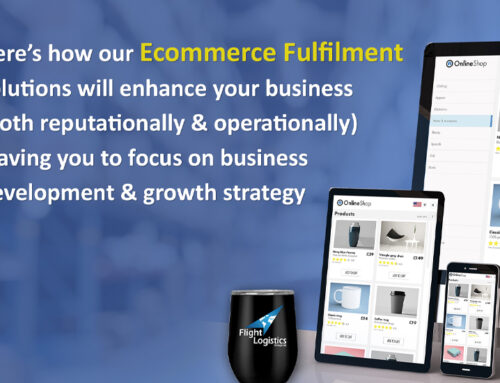The UK’s peak retail season, spanning Black Friday, Cyber Monday, and Christmas, is both the biggest opportunity and the biggest stress test for e-commerce businesses. Order volumes surge, customer expectations rise, and even a small oversight can snowball into delivery delays, costly returns, and negative reviews.
While many brands manage their own logistics planning, others rely on experienced fulfilment and shipping partners to help keep everything running smoothly. Companies like Flight Logistics Group work behind the scenes with UK e-commerce businesses, ensuring that carrier deadlines, inventory, packaging, and customer communications stay on track when it matters most.
To help you prepare, here’s a 6-point peak season shipping checklist you can use to safeguard your operations before the rush hits.
1. Confirm carrier cut-off dates and service levels
Every carrier sets holiday cut-offs for guaranteed delivery, especially in peak season.
- Review and document cut-off dates for Royal Mail, DPD, UPS, FedEx, and DHL.
- Communicate these deadlines clearly on your website and checkout page.
- Consider offering premium next-day or weekend delivery options.
Tip: Build in a one-day safety buffer to reduce risk from unexpected delays.
2. Stress-test packaging and labelling
Damaged parcels or unreadable labels are more likely when volumes spike.
- Test your packaging for durability underweight, drop, and weather conditions.
- Check barcode readability and ensure SKU labels scan correctly.
- Use eco-friendly materials where possible, shoppers increasingly expect sustainable packaging.
Tip: Pre-printing seasonal labels can save hours during order surges.
3. Audit your returns workflow
A seamless returns process can turn a frustrated customer into a repeat buyer.
- Review your returns policy, make it easy to find and simple to follow.
- Decide whether to extend return windows over Christmas (many UK brands now do).
Tip: Returns are an overlooked retention tool, promote yours as a selling point.
4. Align warehouse and fulfilment resources
Even if you outsource fulfilment, it’s critical to confirm capacity.
- Forecast order volumes using last year’s data plus projected growth.
- Ensure staffing levels and warehouse space are scaled appropriately.
- Double-check your warehouse management system (WMS) handles peak traffic without lag.
Tip: Create a contingency plan with temporary staff or flexible shifts.
5. Optimise inventory and stock placement
Being out of stock can be more damaging than late deliveries.
- Identify bestsellers and ensure adequate stock levels.
- Store fast-moving items in easily accessible warehouse zones.
- If you sell internationally, check that products are customs-ready to avoid cross-border delays.
Tip: Keep a real-time stock tracker, don’t rely on manual counts in peak weeks.
6. Upgrade customer communication
Transparent, proactive communication reduces “Where is my order?” enquiries.
- Automate order confirmations, dispatch alerts, and tracking updates.
- Set clear delivery expectations at checkout.
- If possible, provide a branded tracking page for reassurance.
Tip: During peak weeks, update shipping FAQs daily with live information from carriers.
Final word
Preparation is the difference between thriving and fire-fighting during peak season. By confirming carrier cut-offs, strengthening packaging, refining returns, aligning resources, optimising stock, and improving communication, UK brands can enter Black Friday, Cyber Monday and Christmas with confidence.
For some businesses, ticking every box on this checklist is straightforward. For others, it can feel like juggling too many moving parts at once. That’s where working with a trusted logistics partner, such as Flight Logistics Group, provides real peace of mind. With the right support in place, you can focus on sales and customer experience while experts keep your shipping strategy running smoothly behind the scenes.
Use this checklist as your roadmap, and remember, whether you manage everything in-house or work with a logistics partner, the key is planning ahead.
FAQs: Peak season shipping checklist
Q1. What is peak season in e-commerce?
Peak season typically runs from late November through December, covering Black Friday, Cyber Monday, and Christmas. It’s the busiest sales period of the year for UK retailers.
Q2. Why is shipping preparation important for peak season?
High order volumes and strict delivery deadlines increase the risk of delays, lack of stock, and returns. Preparing early ensures smooth fulfilment and a better customer experience.
Q3. What should UK brands review before peak season?
Key areas include carrier cut-off dates, packaging durability, returns workflows, fulfilment capacity, inventory planning, and customer communication.
Q4. Can a logistics partner help with peak season shipping?
Yes. Many brands work with fulfilment and shipping providers, such as Flight Logistics Group, to manage operations at scale and reduce the risk of disruption.
Q5. When should I start preparing for Black Friday and Christmas shipping?
Ideally, planning should begin in September or October to allow time for carrier negotiations, packaging tests, staff training, and stock adjustments.














